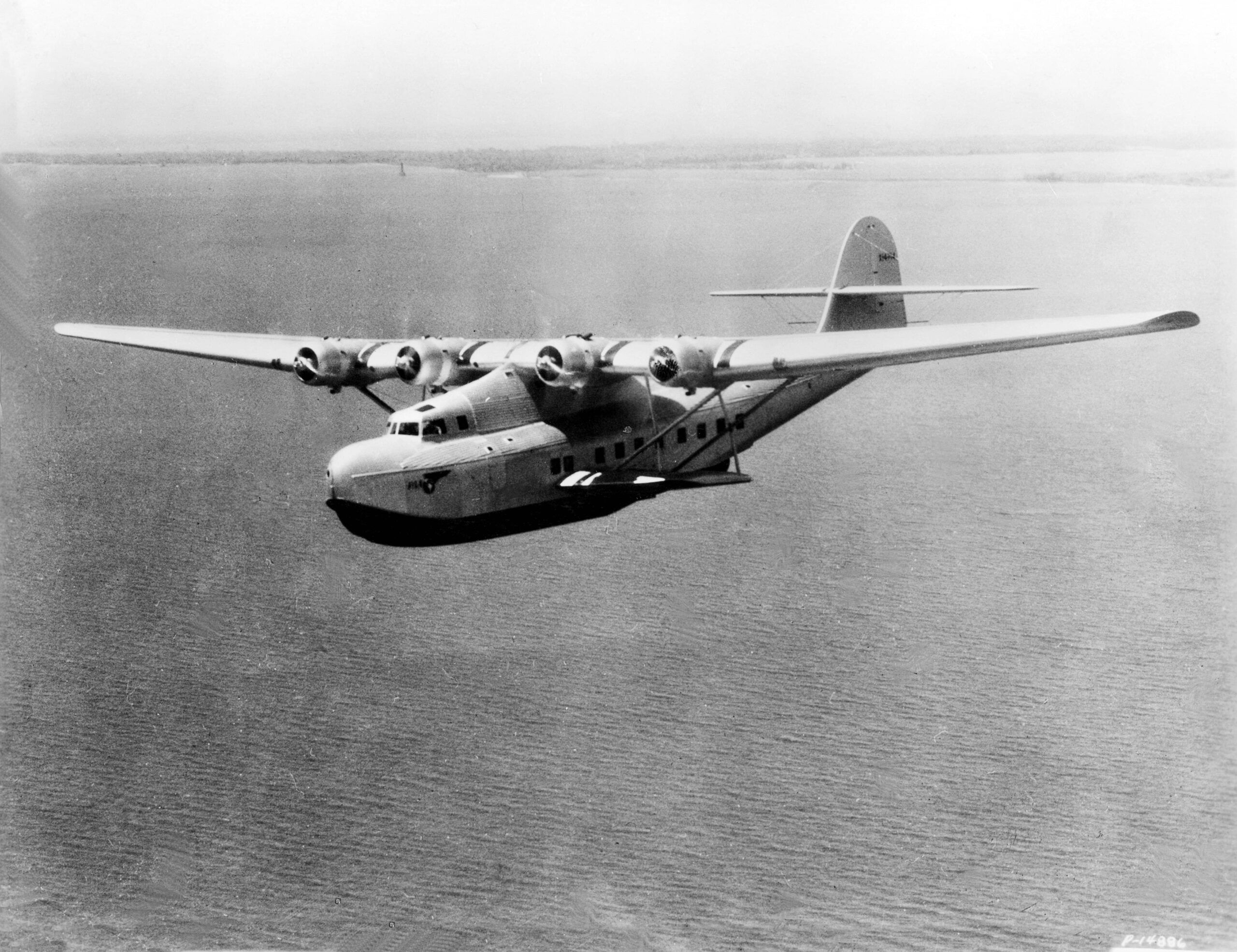
This week, we have a guest post by J.B. Rivard who wrote an article for the American Aviation Historical Society (AAHS) and used one of my articles as a reference. He sent a copy of his work to me and I loved it! I asked if I could share it with you and he was kind enough to say yes.
J.B is a fascinating man: engineer, artist, Navy vet, and retired nuclear reactor specialist. He is a scholar of aviation history, but has also recently released a historical novel, Dead Heat to Destiny, following three citizens (and a spy!) whose lives are transformed by the First World War. The novel is currently a finalist for the 2023 INDIES Book of the Year Award!
The American Aviation Historical Society holds a wealth of knowledge on American aviation history. While the AAHS Journal is exclusive to members, their mission and AAHS Flightline provide compelling reasons to consider membership for anyone intrigued by US aviation history.
I hope you find his article as fascinating as I did.
The Disappearance of the Hawaii Clipper May Not Be as Mysterious as Was Thought
Because no trace of the Pan American airplane has ever been found, the mystery has spawned speculative theories. Can present-day understanding offer realistic alternatives?
by J.B. Rivard
Originally published in the AAHS Journal, vol. 68, No. 4, Winter 2023 pp 257-265.
The page one headline of The New York Times on July 30, 1938 was in boldface:
CLIPPER VANISHES ON PACIFIC FLIGHT
VAST HUNT FUTILE
Under a Manila dateline was the following:
“The huge flying boat Hawaii Clipper, unreported since 12:11 P.M. yesterday on a flight from Guam, was the object today of one of the most intensive sea searches ever undertaken in Asiatic waters. When darkness yesterday forced the realization that the Clipper would be unable to make her usual afternoon landing…Pan American officials called on the army and navy…”
Years later, as is noted herein, two books claim the Hawaii Clipper was hijacked.
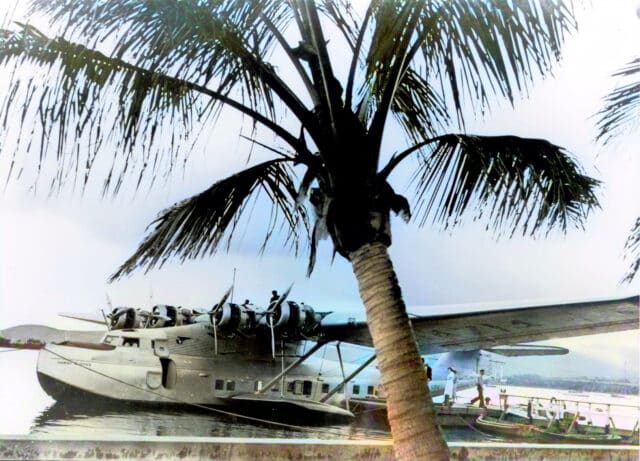
Pan Am Trip 229 took off on July 29, 1938 with six passengers and a crew of nine. For the initial eight hours of the projected 12-½-hour, 1589-mile flight, radio messages received from the aircraft indicated the flight was routine. But at 04:15 UTC, when the Panay, Philippines radio operator called the Clipper, no reply was received, and emergency procedures were begun.
The Search
The Clipper was overdue that evening at Manila. According to page 1 of The New York Times, “the navy dispatched every available vessel in the Sixteenth Naval District,” plus “the army dispatched at dawn six long-range Martin bombers capable of a 1,100-mile flight to weave an 80-mile-wide pattern toward the Clipper’s last reported position, 565 miles from Manila… By noon, the bombers had scanned 72,000 square miles of ocean without success…[in] perfect visibility.”
Two and a half months later, on November 18, 1938 the Air Safety Board of the Civil Aeronautics Authority, a forerunner of the National Transportation Safety Board, issued a report on the missing Hawaii Clipper.
Regarding the search, it said the vessel nearest the Clipper’s last reported position was U.S. Army transport Meigs, a 431-ft steamship. This vessel was about a hundred miles west-northwest of the last reported position of the Clipper.
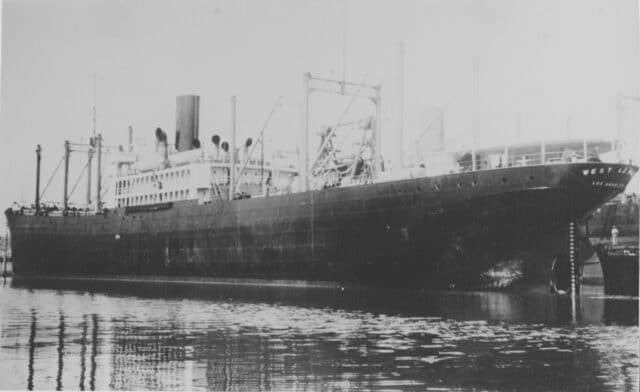
About 6-½ hours later, (around local midnight) Meigs arrived at the Clipper’s last-reported location, whereupon the ship searched the immediate vicinity for three hours without making any discoveries. For the balance of the night and throughout the next day, the vessel searched the general area as instructed by Pan Am.
At 5:10 p.m. that day, Manila time, an oil slick was sighted about 28 miles SSE of the Clipper’s last reported position. Officers of Meigs estimated its diameter as between 500 and 1,500 feet, roughly circular.
A small boat was launched to collect a sample of the slick, but only a small amount was collected before the boat was recalled due to darkness. Although the MEIGS hove to overnight, by morning the slick could not be located. The ship returned to the original location of the slick, but the slick was not seen again.
From this time forward extensive air and sea surface searches were run by MEIGS, by Navy destroyers and submarines, and by Army and Navy aircraft. Areas covered included shores and interiors of the numerous islands of the Philippines group. Search conditions were good, but no oil, small debris floating on water or deposited on land were sighted. The search was thereafter abandoned on August 5.
The collected oil slick samples, less than 3 cc each, were later tested by chemists, who found that the samples did not include the type of oil used by the Hawaii Clipper. Additional tests of mixtures of seawater and aircraft oils of the proper type appeared to confirm the negative findings of the chemical tests.
The Air Safety Board investigation report said the Clipper sent the last routine radio report at 0400 G.C.T. (Greenwich Civil Time). It was received by the Panay radio operator:
“Flying in rough air at 9100 feet. Temperature 13˚ centigrade. Wind 19 knots per hour from 247˚. Position Latitude 12˚27’ N. Longitude 130˚40’ E dead reckoning. Ground speed made good 112 knots. Desired track 282˚. Rain. During past hour cloud conditions have varied. 10/10ths of sky above covered by strato cumulus clouds, base 9200 feet. Clouds below, 10/10ths of sky covered by cumulus clouds whose tops were 9200 feet. 5/10ths of the hour on instruments. Last direction finder bearing from Manila 101˚, true.”
The Panay operator acknowledged this message and answered that he wished to transmit the latest Manila weather report, in accord with the standard procedure of Pan Am.
The Clipper radio operator replied:
“Stand by for one minute before sending as I am having trouble with rain static.”
About ten minutes later, the Panay operator called the Clipper to relay the weather report, but his message was not acknowledged. The Panay operator continued calling, but no acknowledgment was received.
At 0415 G.C.T., the Panay operator sent the Clipper’s position report to Manila. This resulted in activation of a standard emergency procedure for all Philippine stations. However, the Clipper never arrived at Manila, and was not seen nor heard from again.
The Aircraft
The Martin M-130 was a metal-skinned, high wing, flying boat with a 130-foot wingspan, built in 1935. It was powered by four Pratt & Whitney R-1830 air-cooled radial engines driving Hamilton Standard propellers. The airframe utilized riveted 24ST aluminum alloy for the bulk of its construction, including transverse bulkheads and frames in the fuselage. The hull included keelson, corrugated bottom skin and deck covering, and smooth side skin. Its maximum gross weight was 52,000 pounds.
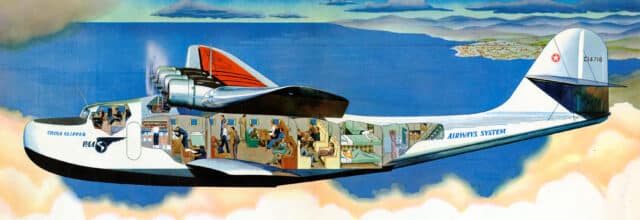
The forward passenger compartment accommodated 10 passengers. Two rear compartments accommodated 10 passengers each. The passenger compartments were furnished with large, comfortable seats convertible into berths, with magazine racks and tables. The passenger lounge was equipped with several chairs in addition to fixed seats. The control bridge was equipped with dual flight controls and instruments, including a Sperry Automatic Pilot.
Investigation
According to the Air Board, the aircraft had been last certified as airworthy on July 23, 1938. It carried two independent radio transmitters, either of which was capable of transmitting on assigned frequencies or on the international distress frequency of 500 kilocycles (500 kHz).
The Air Board investigation report states that the flight crew, including its Captain, Leo Terletsky, a pilot with 9,200 hours of flying experience including 1,626 hours of trans-Pacific operation, was legally qualified, physically fit, and thoroughly experienced in guiding the big airplane over this route.
The Times reported that three of the four motors would sustain the ship in normal flight, and that the Clipper was equipped with a rubber lifeboat, emergency gear, and ample rations. In the event of loss of electricity, a hand-operated generator could power the radio. In addition, the Clipper might have sought landing in “one of the scattered islands or uncharted reefs lying between her last given position” and the Philippines Archipelago.
The Air Board reported the estimated duration of the flight as 12 hours, 30 minutes. The gasoline and oil aboard was sufficient for 17 hours, 30 minutes of flying, carrying six passengers and 1,138 pounds of cargo.
A weather forecast prepared by the Pan Am meteorologist in Manila prior to the flight showed thunder clouds at 14,000 to 16, 000 feet and widely-scattered thunder showers over the Philippine Archipelago. The 0400 G.C.T. message from the Hawaii Clipper included the words, “rough air,” “rain,” and a temperature of 55˚F, with clouds above and below the aircraft limiting the pilots’ vision; the pilots were forced to fly on instruments half of the time. These specifics indicate the Clipper was caught in a rainstorm. The mention of “rain static” refers to high-frequency noise present on radio, a precipitation-caused electrostatic disturbance that interferes with reception.
The Air Board reported that “a trusted employee of a telephone company on the Philippine island of Lahuy” heard a “large airplane flying above the clouds” around 3:00 p.m. Manila time on the afternoon the Clipper went missing. It was ascertained that no Army or Navy or private aircraft were aloft in that vicinity that day. A second “careful aerial search was made of Lahuy and nearby areas” as a result of this employee’s observation, without result. No details of this second search were included in the Air Board report.
Theories and Analysis
In its official investigation report of November 18, 1938, the three-person Air Safety Board of the CAA concluded the account from the Island of Lahuy of an aircraft heard flying above the clouds “cannot be ignored,” that the [1938] aerial search of Lahuy and other areas in the islands “cannot be considered conclusive,” and that “no authentic trace of the aircraft was discovered.” Its Chairman was Robert D. Hoyt, Aeronautic Inspector, with members Phil C. Salzman, Airline Maintenance Inspector, and W. T. Miller, Airway Superintendent, International Section.
During the 85 years since the Clipper went missing, the mystery has impelled writers to produce books and articles on what happened to the Hawaii Clipper.
In 1980, Ronald W. Jackson’s book, China Clipper, claimed two Japanese military officers sneaked on board the Hawaii Clipper during its overnight stay on Guam. The two men later hijacked the aircraft and took it to a Micronesia island. Part of the hijackers’ motivation was $3 million carried by Wah Sun Choy, a Chinese-American passenger on the flight. The money was to be delivered to Chiang Kai-shek to aid in the Nationalist’s defense against Japanese invaders.
Charles N. Hill’s book, Fix on the Rising Sun, published in 2000, also includes the hijacking of the Hawaii Clipper by Japanese officers. In Hill’s narrative, the aircraft was subsequently guided to Truk Atoll, and the crew and passengers were later killed.
Aviation historian Jon F. Myhre in 2013 issued “The Hawaii Clipper Update 5,” in which he proposed three theories, first that “the plane was hijacked by Japanese rebels,” and second, that “after losing its radios, the plane continued on towards Manila and crashed into a mountain.” The third theory Myhre explained as follows: “After reviewing the Air Safety Board investigation, I’m certain the Clipper exploded—or suffered some kind of in-flight structural failure at 0411 G.C.T.” Expanding on the third theory, he claimed “something electrical was definitely involved,” and concluded “something [dire] happened to the Clipper” in the vicinity of the oil slick sighted by the MEIGS.
Inescapable Facts
At takeoff, The Hawaii Clipper weighed about 49,894 pounds. Its engines burned about 7,000 pounds of gasoline arriving at its last reported location. Even if the Clipper burned all of its remaining fuel, it would still constitute over 34,500 pounds. Its aluminum alloys, steel, iron, and other less-durable materials, minus the weight of the people on board, ultimately came to earth either on land or in the ocean. So on the day it went missing, the Clipper constituted about 32,000 pounds or 16 tons, a mass greater than half a dozen crushed automobiles.
If the Clipper ultimately crashed onto land, a minor fraction, perhaps a thousand pounds or so of degradable materials may not be present over the more than 85 years that have passed. This loss, due to corrosion and/or disintegration, still leaves more than 15 tons of solid—mostly metal and metal oxides—wreckage currently present.
Alternatively, if the Clipper crashed into the sea, corrosion over 85 years would account for a larger change in the makeup of the wreckage. A majority of the aircraft’s mass was metal, including aluminum (most of the structure of the airframe and its exterior skin, known at that time as 24ST aluminum alloy) and iron (engines, steel propellers, lesser interior parts such as pilot’s seats, various mechanisms and mechanical controls).
In contact with seawater, the iron and steel rusts away steadily, but the major mass of aluminum alloys tends to oxidize, meaning its surface corrodes by returning to mineral form. The coating of aluminum oxide that forms is somewhat protective, although its chalky exterior may be considerably weakened by pitting. Therefore, the structure’s wreckage in seawater would most likely retain some structural form, at least at a small scale.
Nonmetallic materials such as cloth, leather, plastic, wood, etc., will have mostly disintegrated and left the underwater wreck. But it is likely that the remaining tons of corroded metal wreckage could be recognizable as parts of the Hawaii Clipper. Unusual features of the Martin M-130, such as large sections of corrugated 24ST skin would aid in the identification.
Thesis & Analysis
At 0400 G.C.T., the Clipper was flying in cold air in or between clouds, half the time on instruments, the air was “rough,” and its radio operator, William McCarty, complained of “rain static.” This implies the flight entered a rainstorm. Minutes later, the Clipper’s radio transmissions ceased. Also, as noted above, in 2013 Jon F. Myhre, after reviewing the Air Board’s investigation, said he was certain something catastrophic had occurred at 0411 G.C.T. He ventured it was “something electrical.” The conjunction of rainstorm, static, and Myhre’s diagnoses suggest the Hawaii Clipper was struck by lightning.
It is important to stress that lightning was less well understood in the 1920-30 decades. When a lightning-caused airplane accident occurred in 1929, scientists and aeronautical engineers insisted that lightning played no part in the crash, that there was “no proved instance of an airplane ever having been struck by lightning.” Over ensuing decades, however, as instances of aircraft being struck by lightning accumulated, those experts were proven to be incorrect. Current understanding of lightning effects on aircraft has required many decades of research as well as the accumulation of many reported lightning strikes on airplanes.
Lightning consists of the discharge of millions of volts and about 20,000 amperes of electric current. This discharge also produces a broad spectrum of intense radio waves. When viewed, lightning’s ‘flash’ of brilliant light appears as a single stroke. But usually it consists of several strokes. The initial stroke leaves an ionized path which subsequent strokes follow, building to a typical flash duration of about one-half second.
A fact not known until the 1980s is that almost 90 percent of strikes on aircraft are induced when the aircraft flies through a highly-charged electrical zone, rather than the aircraft encountering a bolt. Today, because of the threat of lightning, as well as wind shear, turbulence and hail, General Aviation pilots are warned to stay clear of thunderstorms by at least 20 miles.
Although it does not always fully protect, the Faraday Cage principle usually protects occupants of a metal-skinned airplane by conducting the electric current of a strike through the skin surrounding them. Meanwhile, arcing, burning and melting at the entry and exit points of the strike, as well as indirect, induced damage to electrical equipment and avionics, may result. Ignition of fuel vapors is possible, resulting in an explosion. Lightning’s effects on pilots/passengers may include temporary or lengthy blindness, hearing loss, or acoustical shock and/or concussion.
The most common type of lightning strike is so-called “negative” lightning. Less than five percent of lightning is “positive” lightning—a much more powerful and longer-lasting discharge. This latter type of lightning may account for the Airline accident discussed in the next section.
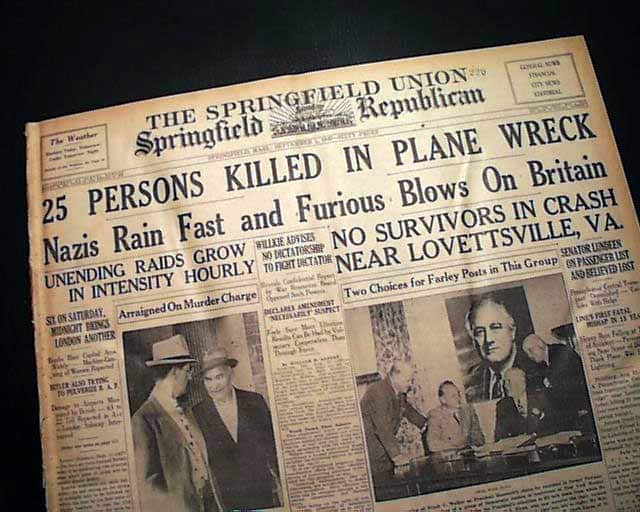
The 1940 Lovettsville Crash
A Pennsylvania Central Airlines DC-3 airliner crashed to the ground August 31, 1940 near Lovettsville, Virginia. Prior to the crash the airplane was on normal course at normal altitude, per its flight plan, between 5,000 and 6,000 ft. Rain was falling, accompanied by nearby lightning, and the air was described as “turbulent.”
Testimony of eyewitnesses on the ground indicated a lightning flash occurred next to, and in front of, the airplane. The DC-3 immediately began a steep descent, its propellers turning at a rate substantially above their rated speed. No communications were received. The DC-3 did not deviate from its descent angle of between 30˚ and 40˚ with the horizontal. The plane struck the ground at a speed of approximately 300 miles per hour. The 25 people on board were all fatally injured. Following impact, the gasoline ignited and burned with great rapidity. No parts of the aircraft were found behind the point of impact.
Investigators into the Lovettsville accident noted that the lightning “may have smashed the cockpit windows or may have caused other damage to the structure and controls of the airplane.” Note, however, that no parts of the plane were found along a vertical projection of the flight path onto the ground leading to the point of impact, proving the airplane remained basically intact while airborne.
The investigating board found the probable cause of the accident to be a disabling of the pilots by a severe lightning discharge that resulted in “loss of control.” In their discussion, the five investigators found that the pilots may have been “blinded or that the pressure wave…may have subjected [them] to acoustical shock or concussion.” Modern studies illustrate numerous complex ways in which humans can be injured by lightning, including loss of consciousness, paralysis, and death. In addition to the effects of electric current passing through the body, strong light as well as shock waves may interact with the body.
Lightning-caused damage
Clarence E. Rash wrote When Lightning Strikes for Aerosafety World, June 2020 edition. He divides the possible damage to an aircraft by lightning into three categories, 1) damage to airframe and structure, 2) ignition of fuel vapors, and 3) damage to electrical and electronic systems (avionics).
Experience regarding category 2) ignition of fuel vapors includes the fate of Pan American World Airways Flight 214—a Boeing 707 airliner—on December 8, 1963. The final accident report of March 3, 1965 concluded lightning ignited fuel-air mixture in the left wing reserve tank of the plane which was flying at 5,000-ft altitude. This caused an explosive disintegration of that section of wing, leading to a plunge to earth that killed all 81 occupants. A wing tip was found several miles from the crash site from which 16 truckloads of debris were eventually removed.
It is obvious, and important, to note the great strides in aircraft safety made during the many decades of aircraft design between today’s airliners and those of the 1960s like the Boeing 707 or those of the Martin M-130 (NC14714) Hawaii Clipper of 1935. Not only were those earlier designs hobbled by less-advanced engineering, they failed to benefit from the advances in system redundancies, computer technology and the higher power-to-weight ratios that mark today’s airliners.
Two design features made the 1935-built Hawaii Clipper particularly vulnerable to lightning-caused fuel ignition. First, its continuous-span wing offers a stiff and robust wing structure, but the wing is connected to the fuselage by a fuselage-mounted pylon. If the wing were subjected to unusual loadings or the fuel tanks therein exploded, the narrow pylon structure allows the wing to separate from the fuselage (struts connecting the wing to the seawings (sponsons) contribute little to retention of the wing). Second, the tail design utilizing fabric-covered, riveted 24ST aluminum alloy frameworks with external steel bracing wires (which were used to save weight) appears extremely weak to loadings not associated with flight.
Experience with high-speed airliner impacts into water includes Sriwijawa Air Flight 182, a Boeing 727-500 which experienced an upset in the air, plunged and ruptured onto the Java Sea January 12, 2021 with no survivors. “In its brief, final descent into the sea, the airliner plunged nearly 11,000 feet in 14 seconds,” according to The New York Times of 19 January. In a prior issue, The Times quoted eyewitness Hendrik Mulyadi, a crab fisherman in a nearby 33-ft boat: “I’m lucky it didn’t hit me. It was like lightning, very fast. It exploded where it hit the water. I saw debris floating. It was airplane debris.” The debris field was estimated to be approximately 260 feet by 360 feet in extent.
If the lightning-struck Hawaii Clipper experienced major damage around 0411 G.C.T. which caused it to plunge from 5,000 feet and impact the ocean, most of the airplane’s steel and aluminum debris would sink. Numerous other components and fragments would tend to float, including:
- Window and berth curtains and bedding
- Seat cushions
- Clothing
- Magazine racks
- Chairs and tables
- Miscellaneous wood objects & parts
- Fabric-covered ailerons, elevators, rudder and trim tabs
- Partly-emptied 57-gallon engine oil tanks, 4 total, if integral
- Empty or partly-emptied gas tanks, 8 total, if integral
- Life raft or pieces of it
It’s likely this quantity of floating debris would have been sighted by the aerial and surface units that searched the 72,000 square mile area (equivalent to a circle 300 miles in diameter) around the last reported location. Therefore, a lightning strike causing major damage resulting in the Clipper plunging into the sea seems an unlikely explanation for its disappearance.
In 1963, the Federal Aviation Administration, following the 1963 crash of Flight 214, ordered static electricity dischargers installed on all Boeing jet airliners not already so equipped. This was in response to a belief that friction generated as an aircraft moves through the air causes a buildup of static electricity (electric charge) that might inaugurate a lightning strike. Today’s aircraft designers routinely install such static dischargers on certain surfaces—wicks or rods which assist the transfer of electricity back into the atmosphere.
Today’s aircraft designers also identify likely structural entry and exit points of a lightning strike including the nose, wing tips, bottom of fuselage and underwing area. Thicker metal skins and flame suppression systems reduce the threat of fuel-vapor ignition. Conductive bonding strips which bridge gaps between (metal) structural sections are also installed to reduce or eliminate potential arcing.
Both the DC-3 (Lovettsville accident) and the Martin M-130 aircraft (Hawaii Clipper) were metal-skinned, which tended to protect the occupants by the Faraday cage effect. But the earlier aircraft designers of that time were largely unaware of the direct and induced-current damage to aircraft structures that accompany lightning exposure. Regarding Rash’s category 1), the four radial engines’ carburetion controls, the cable-actuated fabric-covered ailerons, as well as the cables controlling the elevator and rudder of the Hawaii Clipper might have been subject to disabling due to extreme temperature, burning or melting due to direct or indirect current flows. The tail structure of the Martin M-130, in particular, was vulnerable, not only the upper, fabric-covered section of the vertical fin, but the fabric-covering of the horizontal stabilizer and fabric-coverings of the elevators and rudder, all of which were subject to ignition of the doped fabric. The stainless-steel external bracing wires installed to stiffen the fin and horizontal stabilizer, because they were connected to steel or aluminum structural members, were subject to melting, threatening the entire tail structure.
Relative to Rash’s category 3), vacuum tubes and the interior wiring of radios, direction finder and the flight instruments, as well as hundreds of feet of electrical wires connecting equipment and lighting inside the Clipper would likely have lacked shielding and surge-suppression protection from electromagnetic (induced) currents generated by lightning exposure. The Clipper was equipped with an early Sperry Autopilot (possibly the A-3 model) which also may have become disabled by induced current flows. Turbine-type pumps transferring fuel from the hull tanks and seawing (sponson) tanks to the wing tanks might also have been disabled.
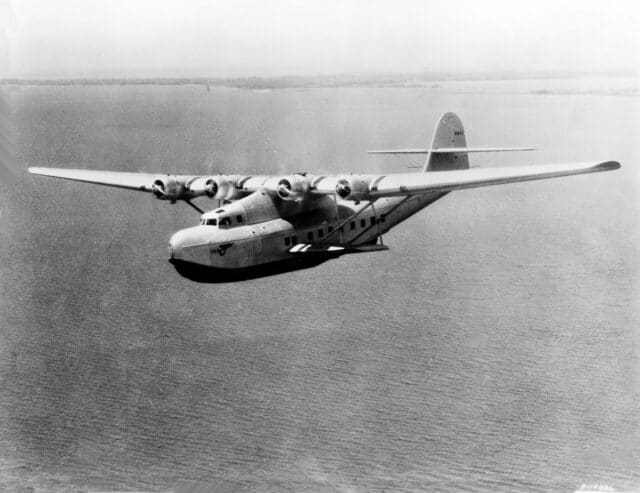
In summary, because the Hawaii Clipper lacked many or all of modern protections and had few, if any, redundant controls, it was vulnerable to disabling when struck by lightning or much less likely, by being adjacent to a ‘positive’ lightning stroke. Electrical arcing may have melted components or controls, effectively destroyed circuits, and rendered various instruments or controls ineffective, inoperable or prone to error.
Deprived of flight aids, this may also have diminished the crew’s ability to guide or routinely operate the aircraft. Thus the damaged aircraft may have flown on toward the direction of Manila for an unknown time until finally crashing onto either land or sea.
Discussion
Considering the weather and atmospheric conditions at the time of the final radio transmission, and the abrupt cessation of communication around 0411 G.C.T., it appears inescapable that the Hawaii Clipper interacted with lightning.
Because five of the nine Hawaii Clipper crew members were trained and experienced pilots, blindness or other serious injury to the two pilots at the controls by lightning discharge may not have been catastrophic. If the pilots at the controls were incapacitated, the other pilots could probably have assumed control of the plane, preventing a devastating crash. Therefore, considering the absence of the sighting of any floating debris in the wide vicinity of its final radio transmission, it appears reasonable to assume the flight of the Clipper continued on with disabled radios and other unknown but lightning-induced damage.
An accompanying caveat, however, is uncertainty in the Clipper’s actual position as reported during the 0400 G.C.T. transmission. Although aided by its direction finder, the Clipper’s navigation depended largely on dead reckoning, in which errors are cumulative and subject to revision by celestial sightings. It is doubtful that sightings of the sun were available to the Clipper’s recent situation because McCarty reported 10/10ths of the overhead sky obscured. The resulting uncertainty in location at that time adds an additional uncertainty to the subsequent track of the damaged Clipper.
McCarty’s 0400 G.C.T. report included a direction finder indication of 101˚ true relative to Manila. Because McCarty also reported a heading of 282,˚ this suggests the Clipper’s course was nearly identical to the reciprocal of the direction finder’s reading.
But following a lightning strike, the lack of adequate protection of the Clipper’s controls and instruments to indirect damage by lightning-induced transients means they could have been damaged. The damage may have introduced difficulties in controlling the aircraft, in maintaining its attitude, altitude, and/or heading. Such problems may have induced changes in heading and/or a gain or loss of speed. It is possible that, after hours of flying generally westward, the Clipper might actually have passed over the island of Lahuy on the southeastern end of Luzon with ample fuel still onboard. Sunset was still hours away.
In overcast conditions, the Clipper’s pilots, faced with defective or inoperative flight aids, would have been forced to seek visual landmarks directing them to Manila. Once they assumed they were near or over the Philippine Archipelago, the pilots would have descended below obscuring clouds to identify geographic features that would point to Manila. Luzon is mountainous, so dropping down through clouds to lower altitudes risked a crash. The Appendix lists 44 named mountain peaks over 7,000 feet on the island of Luzon. Numerous mountains of lesser altitudes are of course not included on the list.
Less likely is that the pilots passed over Luzon and continued flying generally westward over the South China Sea where it would have eventually exhausted its remaining 4+ hours of fuel and ditched or crashed into the water. This area was not likely searched during the searches described above.
As reported by the Air Board in 1938, a second aerial search for the Clipper in the area around Lahuy was authorized after a telephone company employee on Lahuy heard a “large airplane flying above the clouds.” Although that second search failed to uncover the aircraft, the extent, duration, and methodology of that second search, and therefore its effectiveness, was not discussed in the accident report.
Lahuy is a six-mile long island a few miles offshore of the southeastern part of Luzon Island. This section is known as the Bicol region. A number of large and deep bays punctuate the peninsula’s shoreline (see map). Around the time of the Clipper’s crash the Bicol peninsula’s population density was about the same as that of Europe. But this density is deceptive because it applies to the mainland rather than to the numerous islands adjacent to the peninsula.
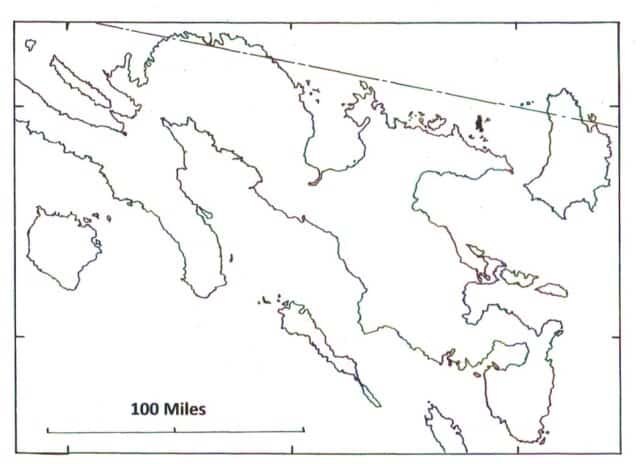
About 104 named islands exist in the illustrated area of Luzon, plus an unknown number of unnamed islands. Many are uninhabited. Most are heavily forested. Where inhabited, the island populace is usually found in tiny villages called Barangay. Most inhabited islands have only one or two Barangays. The Barangay people’s main sustenance is fish caught from double-outrigger boats. In 1938, these outriggers were mostly propelled by humans using paddles.
Because of their dependence on fishing, Barangay are located on the coasts of islands. Even today, the Barangay represent isolated lifestyles, their outrigger fishing boats comprising the available mode of transportation and communication. (See, for a present example, the town of Sumaoy on Tagita Island, a jagged 3.6 mile-long island northwest of Quinalasag Passage.)
These volcanic islands possess severely jagged coastlines, with deep indentations and sloughs, and with only an occasional sandy beach. The interiors are usually forested, and due to large amounts of rain during all seasons, densely green. Shoals and offshore reefs are fairly common. Due to their emphasis on fishing and a lack of vehicles (especially in 1938), the populace of Barangays on the larger occupied islands probably visited the island’s interior only rarely. On larger inhabited offshore islands, a crash of the Clipper may not even have been audible to Barangay residents.
Consideration of the geography, the Barangays, and the above conditions suggests that island inhabitants may not have discovered wreckage and that the second search of 1938, however diligently performed, may not have located debris or wreckage of the Clipper if it existed on one of these offshore islands.
Of course it’s also possible the Clipper crashed into the sea between islands, or into one of the several deep bays.
Near the end of their 1938 report, the Air Board concluded, “Due to the character of the terrain, the Board is not prepared to say that the aerial search of Lahuy and other areas in the islands can be considered as conclusive.”
Conclusions
The discussion above posits that the abrupt loss of radio communication from the Hawaii Clipper was most likely the result of interaction with lightning. Although additional damage caused by that interaction is unknown, it seems probable that it resulted in a disabled aircraft piloted by aviators desperate to continue to a safe landing. Yet they were not able to communicate, and possibly hobbled by damage to the aircraft, ceased flying.
It seems therefore reasonable to suppose the Clipper ultimately crashed into the sea, into a mountain, into one of the large bays or onto the interior of one of the hundreds of islands adjacent to the main islands of the Philippines Archipelago.
If the lightning-damaged Clipper was over open water and ran out of fuel or was otherwise forced to ditch, a low-speed water landing by the Hawaii Clipper—because of its hull design—might allow some or all occupants to survive. With the advantages of a liferaft and rations, they might have been rescued. No such rescue is known to have occurred.
Perhaps because of the Archipelago’s offshore islands’ sparse habitation, a severe crash might have occurred without being either seen or heard. The Clipper may have crashed into the dense overgrowth of a remote and/or uninhabited island or high on a mountain. If it crashed into the sea, floating debris may have eluded visual sighting for a lengthy period until the debris sank, dispersed or decomposed. Nevertheless, many tons of wreckage, mostly corroded metal, remain at the crash scene—perhaps for discovery sometime in the future.
Appendix
Mountains over 7,000 feet on Island of Luzon, Philippines
| Mountain | Height (ft) |
|---|---|
| Mayon Volcano | 8,070 |
| Mount Abao | 8,734 |
| Mount Alal | 8,737 |
| Mount Alchan | 8,586 |
| Mt. Ambalatungan | 7,641 |
| Mount Amuyao | 8,862 |
| Mount Babadak | 8,500 |
| Mount Balait | 7,200 |
| Mount Banahaw | 7,142 |
| Mt. Bangbanglang | 8,051 |
| Mt. Camingingel | 7,490 |
| Mount Cauitan | 8,428 |
| Mount Clawit | 8,901 |
| Mount Data | 7,580 |
| Mount Kapiligan | 8,888 |
| Mount Lamagan | 7,014 |
| Mount Lobo | 7,073 |
| Mount Loco-ono | 7,598 |
| Mount Malaya | 7,717 |
| Mount Mauban | 7,792 |
| Mount Mengmeng | 7,425 |
| Mount Mongawto | 8,835 |
| Mount Muskut | 7,293 |
| Mount Nangaoto | 8,376 |
| Mount Napulauan | 8,668 |
| Mount Osdung | 8,583 |
| Mount Pa’pa | 8,035 |
| Mount Pack | 7,526 |
| Mount Paday | 8,040 |
| Mount Palugloko | 7,730 |
| Mount Panatoan | 7,969 |
| Mount Paquis | 7,020 |
| Mount Pauadan | 7,687 |
| Mount Pawoi | 8,058 |
| Mount Puguis | 7,020 |
| Mount Pulag | 9,587 |
| Mt. Santo Tomas | 7,385 |
| Mount Sapocoy | 8,054 |
| Mount Sicapoo | 7,740 |
| Mount Singakalsa | 8,914 |
| Mount Sipitan | 7,490 |
| Mount Tabayac | 9,226 |
| Mount Tabeyo | 9,250 |
| Pual | 8,890 |
If you enjoyed this article by J.B. Rivard, please let him know in the comments!
Note that the original article as published by the AAHS has the full set of references used for this article. If you are interested in following these through, please let me know and I’ll get you a copy.
Also, you might want to check out J.B. Rivard’s book, LOW ON GAS – HIGH ON SKY: the true story of Nick Mamer’s 1929 transcontinental round-trip flight, a record 6,200 miles without landing.





